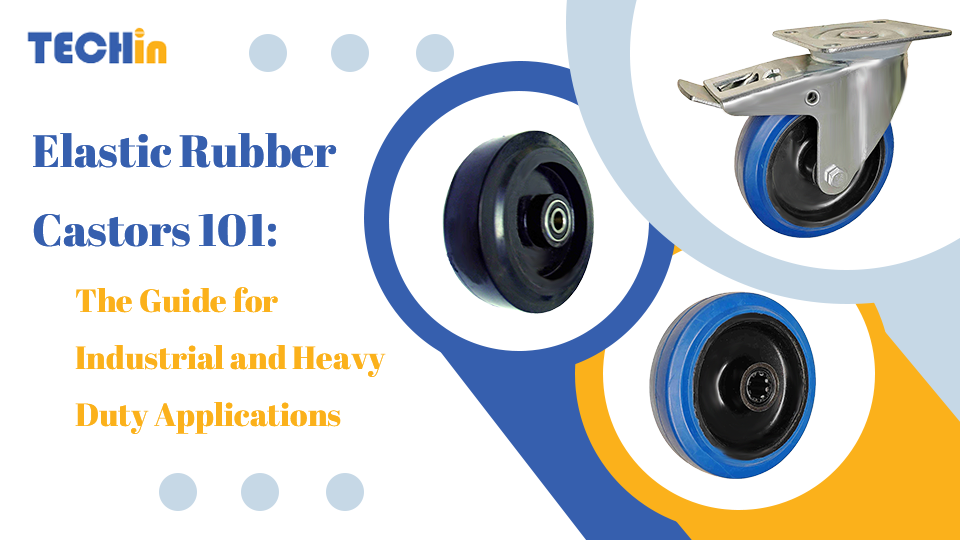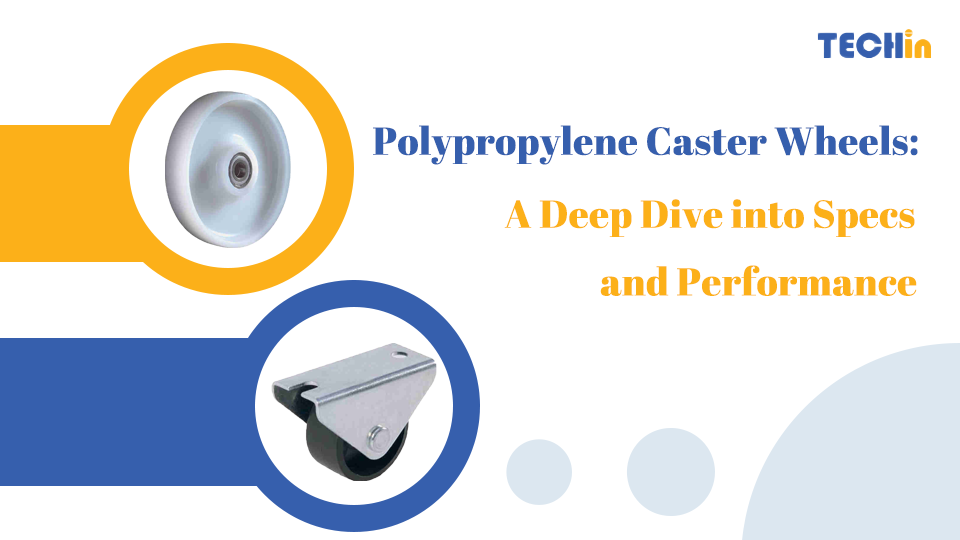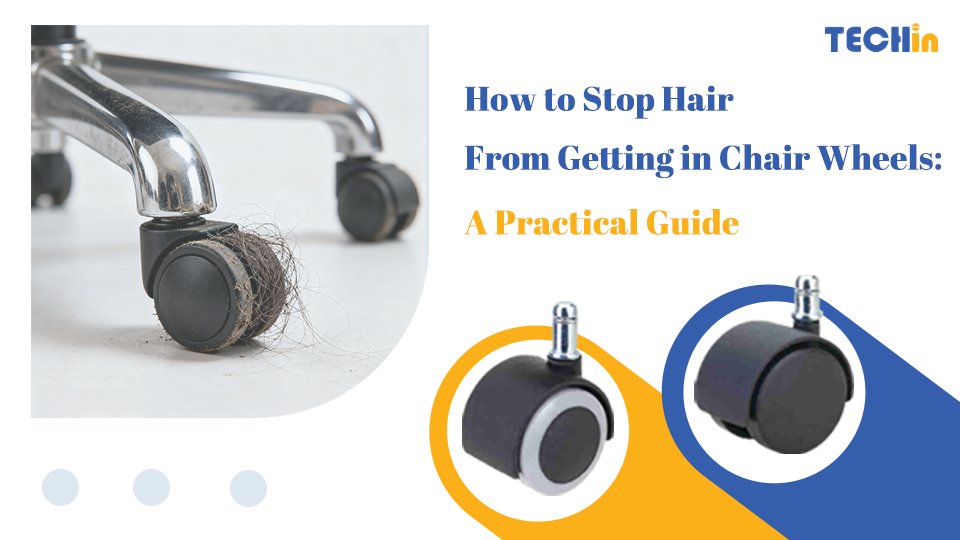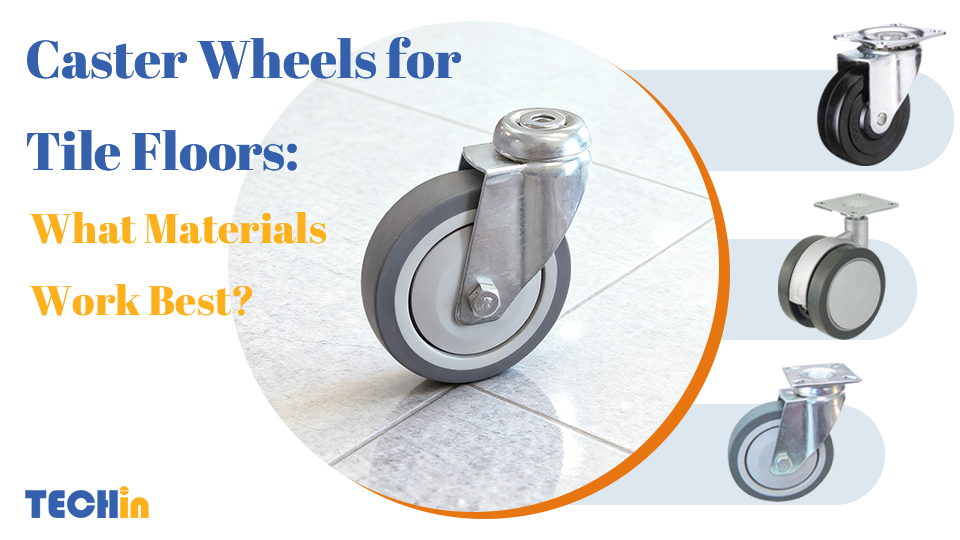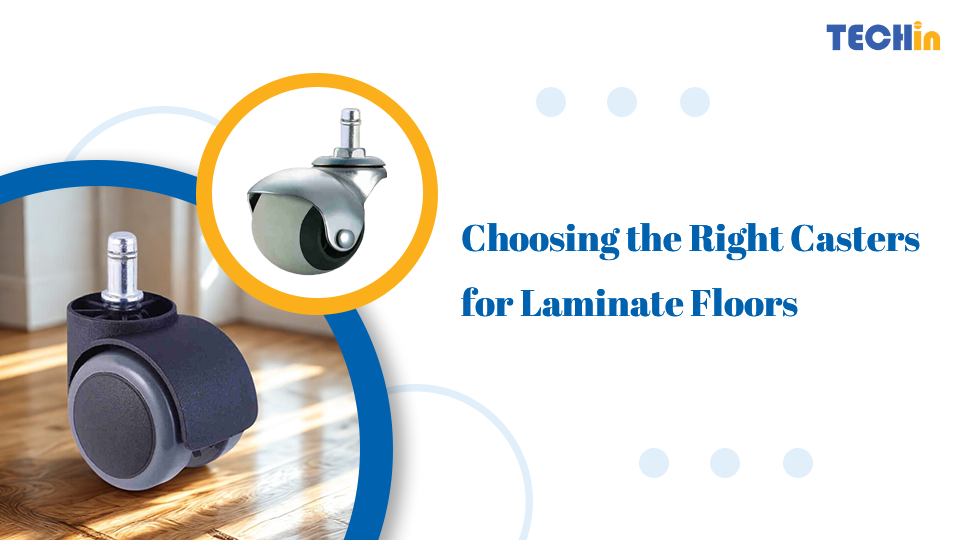Introduction
In any industrial environment, the details matter. A seemingly small choice, like the type of castor on your equipment, can directly impact operational efficiency, floor integrity, and your budget. While often overlooked, elastic rubber castors provide a unique combination of strength, surface protection, and smooth mobility. This guide will walk you through why they are a smart, practical choice for demanding applications.
To put it simply, elastic rubber castors are heavy-duty wheels featuring a soft, high-elasticity rubber tread bonded to a solid, durable core. Their primary function is to provide smooth and quiet rolling, excellent floor protection, and superior shock absorption in industrial and commercial settings. Because they are inherently non-marking, they are the ideal choice for warehouses, factories, trolleys, and any equipment requiring dependable, floor-friendly mobility.
With the basics covered, let’s move on to the details that make a difference. We’ll break down their core advantages, walk you through the selection process, and give you the maintenance tips you need to protect your investment.
What Are Elastic Rubber Castors?
The design of an elastic rubber castor is both simple and effective. It combines a soft tread made from high-grade natural or synthetic rubber with a rigid wheel core, often constructed from steel or aluminum. This dual-component structure is what gives the wheel its ability to roll smoothly while absorbing impacts and protecting floor surfaces.
Key features include:
- A soft, elastic rubber tread that conforms to minor surface irregularities.
- A wide load capacity range, from around 130 lbs per wheel for light-duty use to over 3000 kg for specialized heavy duty solid rubber casters.
- Availability in multiple mounting types, including swivel, fixed plate, and threaded stem to suit various equipment.
In catalogs, you will typically find these listed under terms like rubber tread wheels or solid rubber casters.
What Are the Advantages of Elastic Rubber Castors?
The advantages of using elastic rubber castors translate directly to operational efficiency and safety. They offer tangible benefits that you’ll notice in your daily workflow.
- Shock Absorption: The soft tread dampens vibrations, which is crucial for protecting fragile goods and sensitive equipment during transport.
- Noise Reduction: Their quiet operation makes them essential for environments where noise levels are a concern, such as hospitals, retail spaces, and quiet production zones.
- Floor Protection: The non-marking compound prevents scuffs and streaks on valuable flooring like polished concrete, vinyl, or epoxy.
- Comfortable Rolling: They require less initial force to start moving, reducing physical strain on operators when handling heavy loads.
When compared to TPR wheels (thermoplastic rubber), elastic rubber provides better cushioning, though TPR may offer slightly higher wear resistance. Against hard phenolic wheels, elastic rubber is significantly quieter and more forgiving on floors, while phenolic excels under extreme weight and high temperatures.
What Are Elastic Rubber Castors Used For?
You’ll find these castors in a wide range of demanding applications where reliability and protection are paramount. Common uses include:
- Warehousing: On material handling carts, dollies, and platform trucks that see constant use.
- Medical equipment: To ensure quiet and smooth movement for patient safety and comfort.
- Food service: For non-marking trolleys and mobile racks that must meet hygiene standards and protect floors.
- Retail displays: To allow for easy and damage-free repositioning of store fixtures.
- Heavy industry: On machinery bases and workbenches that require heavy duty solid rubber wheels for stable mobility.
Are Elastic Rubber Castors Better Than Polyurethane?
A frequent question is how elastic rubber compares to polyurethane. The answer isn’t about which is “better,” but which is right for your specific task. Each material is engineered for different performance needs.
- Elastic Rubber is the choice for: Superior shock absorption, significant noise reduction, and maximum floor care.
- Polyurethane is the choice for: Higher overall load capacity, greater resistance to abrasion and tearing, and better tolerance to chemicals and oils.
For applications where a smooth, quiet ride on a sensitive surface is the priority, elastic rubber is the clear winner. For raw strength and durability in harsh environments, polyurethane is the superior option.
Do Elastic Rubber Wheels Mark Floors?
Floor marking is a valid concern, especially in clean or customer-facing environments. High-quality elastic rubber wheels are specifically formulated to be non-marking. They will not leave black streaks or smudges on polished or light-colored surfaces, making them a trusted choice for hospitals, laboratories, and retail showrooms.
It is important to note, however, that quality is key. Lower-grade rubber compounds may not offer the same non-marking properties, so sourcing from a reputable manufacturer is essential.
Are Elastic Rubber Castors Good for Outdoor Use?
Yes, they are well-suited for many outdoor applications, particularly those with weather-resistant rubber compounds. The elastic tread performs well on uneven surfaces like asphalt and concrete by absorbing minor bumps and cracks.
While 4 inch pneumatic wheels might offer more cushioning on very rough terrain, they require air pressure maintenance and are susceptible to flats. Elastic rubber provides a durable, shock-absorbing alternative without that added upkeep.
How Long Do Elastic Rubber Castors Last?
The lifespan of an elastic rubber castor is not fixed; it’s determined by several key operational factors. To estimate longevity, you must consider:
- Load: Consistently exceeding the rated load capacity will cause premature failure.
- Surface type: Smooth floors cause less wear than rough, abrasive, or debris-covered surfaces.
- Usage frequency: Wheels in constant motion will wear faster than those used intermittently.
- Environment: Exposure to extreme temperatures or harsh chemicals can degrade the rubber over time.
Under proper use and within rated limits, a quality set of elastic rubber wheels will provide several years of reliable service in an industrial setting.
How to Choose the Right Elastic Rubber Castor for Your Needs?
To select the correct castor, follow this straightforward process to evaluate your requirements. Getting these details right ensures optimal performance and safety.
- Load capacity: Calculate the required capacity per castor by dividing the total weight (cart + max load) by the number of castors.
- Wheel diameter: A larger wheel rolls more easily over cracks, thresholds, and debris.
- Bearing type: For the smoothest roll and lowest push/pull effort, choose rubber rollers with bearings.
- Mounting style: Plate mounts offer the most stability for heavy equipment, while stem mounts are common for lighter gear.
- Floor type: Match the wheel’s properties to your floor surface to ensure both protection and performance.
Maintenance Tips for Elastic Rubber Castors
Proper maintenance is key to maximizing the life and performance of your castors. Integrating these simple checks into your routine will protect your investment.
- Regularly clean the wheels and housing to remove debris that can impede rolling.
- Periodically inspect and lubricate the swivel bearings and axle.
- Ensure all mounting hardware remains tight and secure.
- Replace wheels that show significant tread wear to prevent poor performance or floor damage.
Summary
In summary, elastic rubber castors offer a reliable and effective solution for industrial and heavy-duty applications where smooth operation, noise reduction, and floor protection are critical. For procurement managers and DIY buyers alike, understanding their benefits leads to a smarter investment, improved performance, and greater long-term value.

